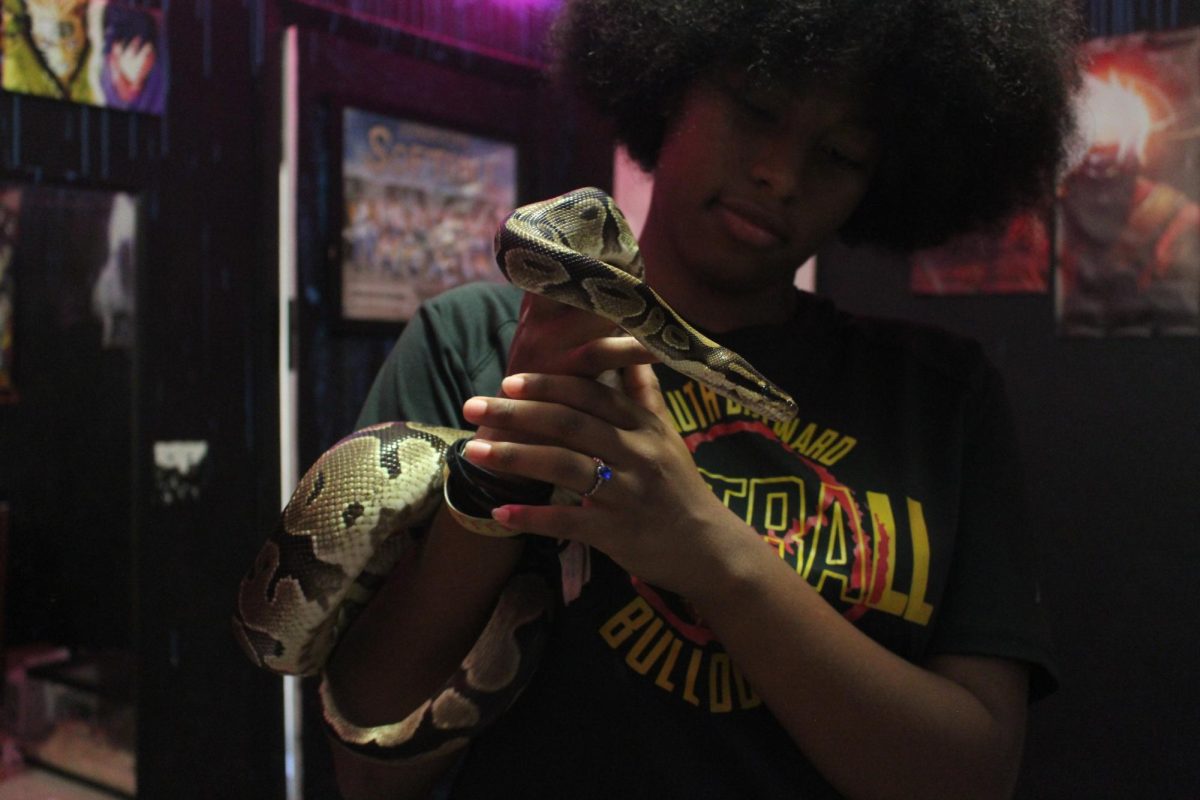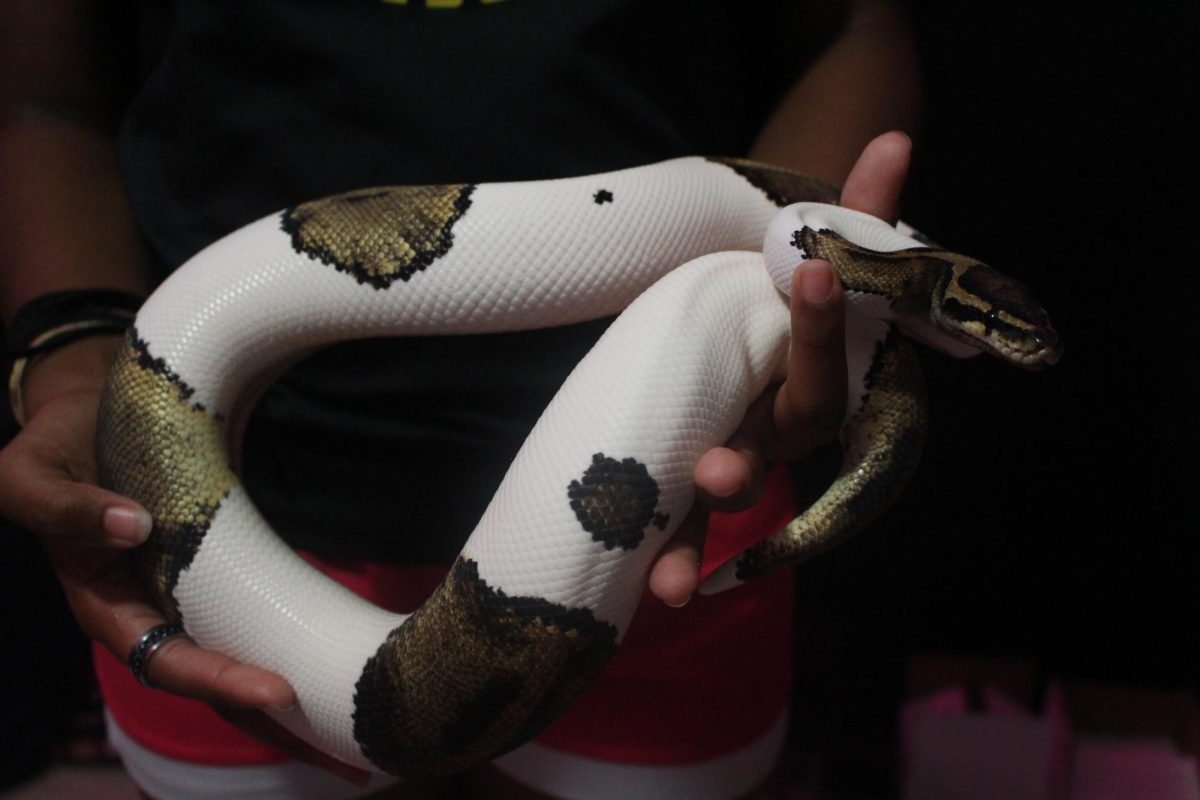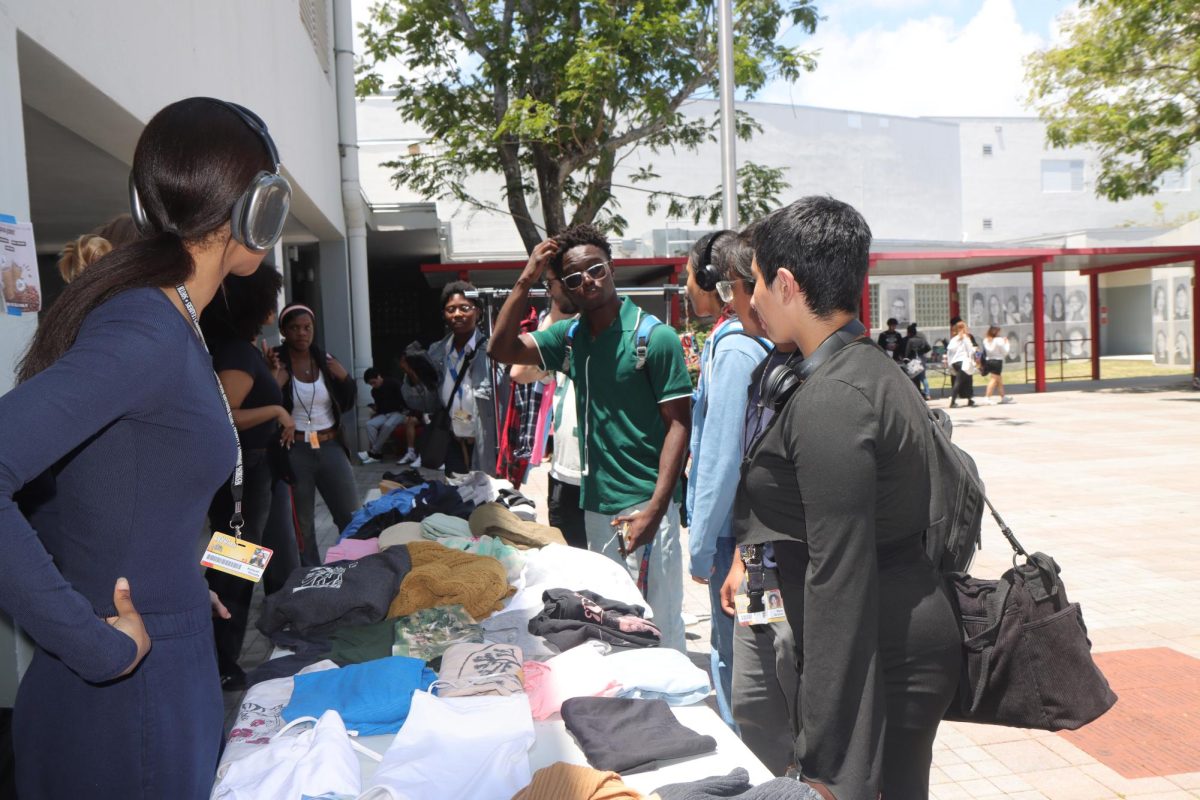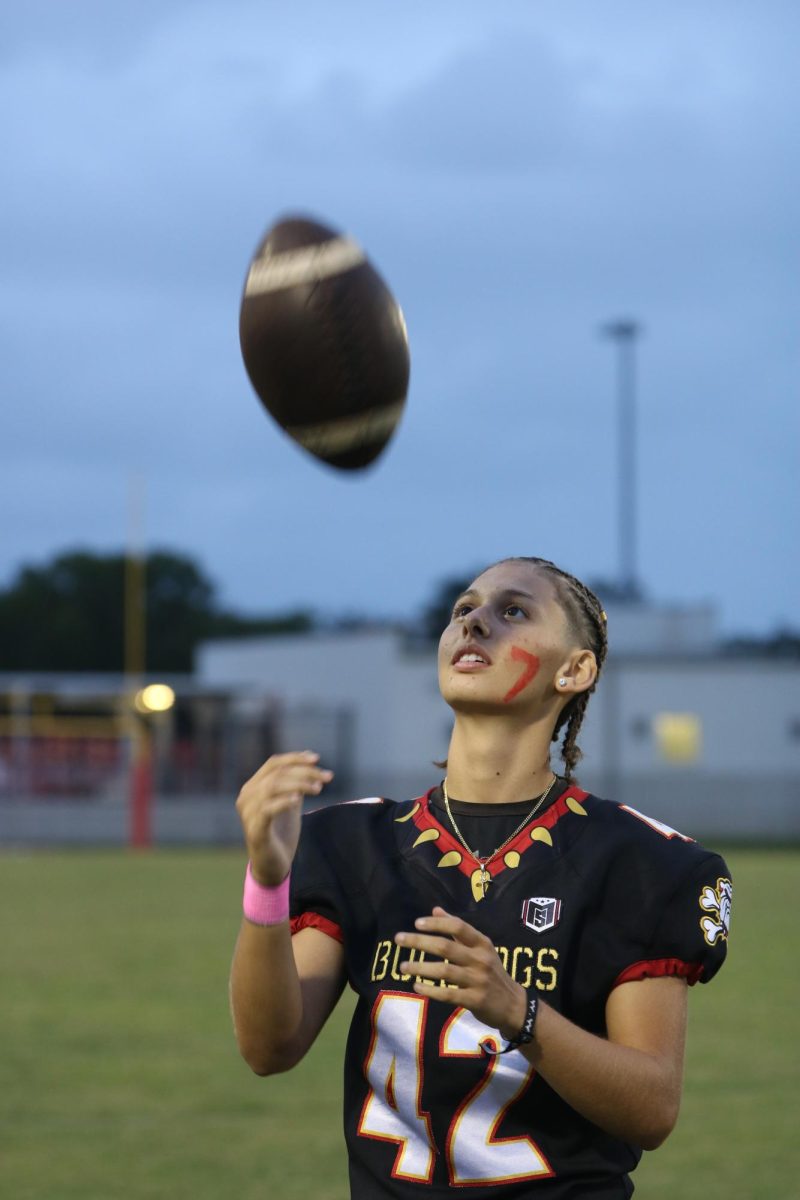Dogs, cats, and sometimes a bearded dragon are all common house pets. SBHS junior Onya Golightly has all of these. But her favorite pets have no legs, no fur, and you wouldn’t consider them cuddly. They’re snakes. Eighteen of them, to be exact. Why so many? Not only are they pets, but they are also her business.
Golightly raises, breeds, and sells ball pythons, one of the most popular nonnative snake breeds people have as pets in Florida. A native of the grasslands of West Africa, ball pythons come in black, albino, or dark brown with light brown blotches and usually grow no longer than four to five feet. She saw the money in it and wanted to start breeding.
“I sold a couple, and I was, like, look at this money racking up,” said Golightly.
It all started nine years ago when her dad brought home a ballpython his friend had given him. She named the female snake Renegade. They were about to sell it when Mr. Golightly brought another ball python home. She named that one Osceola. It’s been four years since she started. She now owns fourteen ballpythons and one hognosepython.
She sells her snakes for anywhere from $70-$600. She markets her snakes by taking her two albino snakes, Osceola and Pearl, to Miami Beach on the weekends. She wears the snakes around her neck, attracting curious beachgoers.
“If someone is actually like, ’You know, I really, really want one’ and I’m like, I have one right now,” said Golightly.
She usually directs them to her Instagram page, where she has pictures of the snakes and videos of the clutches hatching. Interested buyers can DM her for pricing and availability. Golightly says she doesn’t sell to people who would neglect or be irresponsible when taking care of their snake.
But her relationship with her snakes isn’t only financial; there’s an emotional bond as well.
“I started to bond when I got my first snake, Renegade,” she said. “When I got my second snake, I fell in love with them.”
One thing she doesn’t like is when they bite her. This usually happens around feeding time. The smaller, younger pythons need to eat every five days. The larger ones only need to eat every few weeks. It takes an hour to defrost the frozen rats. Golightly feeds her snakes. Biting usually happens when they start to strike the rat as she is lowering it into their container, but they miss, biting her hand instead.
“They’re just like disobedient kids,” said Golightly.
The rats can cost $3.50 or more apiece. It adds up when you are feeding 15 hungry snakes. So, Golightly recently started buying the rats online because it is cheaper.
Her dad helps her out when she isn’t there and not able to feed or care for the snakes, cleaning the containers and feeding them rats. But for Golightly, the best and most fun part of being a snake breeder is the hatching of the eggs.
“It’s almost like Christmas, because you don’t know what you might get or how many you’re going to get,” said Golightly.
The eggs don’t hatch like in the wild, where baby snakes use their egg-teeth to break out of their shells. Instead, Golightly cuts open the eggs with a sharp pair of scissors to free the snakes.
“Cutting open the egg, it’s like, oh, look at that. I got this. Oh, I got that. And then you cut open one, and you’re like, Holy crap, it’s like $3,200.”











